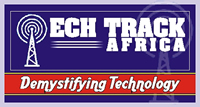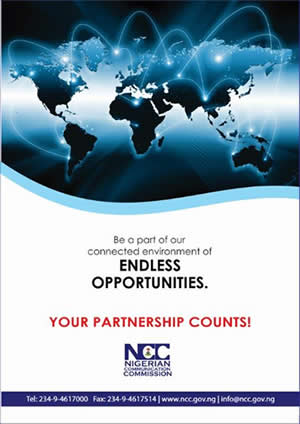
By Prince Osuagwu
Competition in the mobile industry is arguably shifting to the Mobile Mapping Market. The market size exceeded $20 billion in 2019 and is poised to register gains at over 17 percent CAGR between 2020 and 2026. It is also estimated the market could attract advertising revenue worth up to $100 billion per year, according to Barron’s. Although the industry is witnessing a significant disruption with the increasing availability of portable and low-cost sensors and rapidly the growing use of telecommunication networks, the disruption is, however, adding to its strength, by developing new trends, which have become growth parameters.
They include increasing demand for terrestrial mobile mapping in telecommunication and transportation; increasing penetration of mobile devices; increasing investment in city planning and smart city projects; improved network connectivity and the growing role of optic fibre technology in driving smart cities. The irony of the market is that it is almost becoming a one-horse race, with Google dominating market share. According to Morgan Stanley, it is estimated that Google Maps revenue will total more than $11 billion in 2023. Apple map is also estimated to yield advertising opportunities in a hot trail to Google’s. But that’s about it, in a market that boasts of major players like, Trimble Inc, Mitsubishi Electric Corporation, Google, PASCO CORPORATION, Huron Geomatics Inc, TOPCON CORPORATION, The Sanborn Map Company Inc., 3D LASER MAPPING, Apple Inc, NAVVIS, Telefonaktiebolaget LM Ericsson, NGC Aerospace Ltd, FARO Technologies Inc., Microsoft Corporation, Hexagon AB, TomTom International BV, IGI mbH, Hyper Tech, and Gexcel, and NEXIT App; among others.
If among the array of players, Google could not be said to have a strong competition in the navigation market, look no farther than Facebook as an example, to provide the needed competition in the navigation market. What makes Facebook so successful is that it has a powerful combination of the broadest reach, richest user data, and best-in-class ad targeting tools. But, why it is not a giant in the mobile mapping market is surprising.
Though at some point, it attempted to challenge Google’s dominance of the market, through an interest in acquiring Waze, Google, however, outsmarted it and snapped the deal with $966 million in 2013. Meanwhile, there are greater chances of doing so in 2021. The chances include a strategic partnership with a budding but fast-growing mobile mapping business called NEXIT. Although Facebook is not the only company with vast potential to partner with Nexit, according to sources, several potential partners are said to be on the horizon for NEXIT; companies that have a rich audience, and recognize the impending lucrative monetization that is in mobile navigation mapping. These, include Amazon, A T & T, Facebook, Microsoft, Google, Apple, a few of the larger oil companies, and several hedge funds with the connections to optimize this opportunity. Part of the reasons Google reportedly bought Waze was to add social data to its own mapping business, Google maps, and since 2013 when it did that, it was almost a no-brainer that it has shut down competition in the mobile mapping business. That is also what Facebook, could do with NEXIT. NEXIT entered the market in December 2019, and since then, has shown a strong presence in the mobile mapping space. It prides itself on having gone into the critical details of mapping resources, providing landmark technology blueprints that sit mobile maps at the core base of today’s travel needs. For instance, providing customized integrated trip information and preferences; maximizing advertising revenue by showing targeted, relevant advert exposures; multiple search inquiries simultaneously at the same exit and showing upcoming exits while driving, among others, are some of those unique innovations found only in the NEXIT mapping app. NEXIT also: * Automatically shows the cheapest gas per exit and cheapest gas banner for the next 50 miles. * Allows multiple search inquiries (brand & amenity) simultaneously and shows where all are located at the same exit (TravMatch). * Book hotels right along the way integrated into the trip. * Route Planning: -Integrates preferences (brand & amenity) before you go and allows multiple search inquiries (brand & amenity) simultaneously while showing where all are located at the same exit (TravMatch). These are features that will no doubt, leverage on the rich-mined data audience of Facebook to shot the company straight into the top spot of the market. Besides, there are, at least five benefits such a partnership can bring: Benefits of the partnership: *Facebook will have its own navigation mapping app: Let’s face the facts, Facebook’s navigation map is apparently franchised from Google and Apple maps. No wonder it attempted to buy Waze before Google snapped it. But an opportunity to partner with NEXIT will present a renewed vigour to enter the market as a truly independent operator. This is even more advantageous when considering some of the trending innovative commands on NEXIT that may not be found on Google/Waze or Apple mapping platforms. *Firm grip, retention and control of users: It’s a bit curious to observe that map users on Facebook are automatically taken off the platform, onto Apple or Google Maps.
For a platform which major business is knowing who its users are, where they are, what they like and don’t, redirecting its users to a supposed competitor is losing valuable engagement, which is antithetical to such businesses. But with NEXIT, mapping would be integrated directly into Facebook’s products and platforms. That at least would keep users where they should be. *Opportunity of tying all Facebook social media platforms together with navigation: Partnership with NEXIT navigation can help Facebook tie all its properties together in synergy, based on the characteristics of the app. Facebook users who desire to plan a trip across the country, walk around the city, get daily coffee or weekly gas can do all that in one sitting because NEXIT provides them in a one-stop-shop. This feature helps Facebook to have control of its users when they are using navigation. *Global Navigation Reach: Facebook is everywhere but not its navigational app. However, NEXIT is currently available in the USA, and coming globally to cities like Paris, Dubai, London, Berlin, Lagos, Sydney, and others in Q4 2021. That is an added advantage Facebook can leverage on. *Additional revenue streams: Considering the projections by Barron’s that map ads could be $100 billion per year, and Google’s projected revenue from mapping which is expected to surpass $11b by 2023, according to Skift, is bad business for Facebook to have over 1.5 billion users and not monetising their data through the navigational platform. Teaming with NEXIT could help Facebook add up to $10 billion in 2023 through NEXIT mapping monetization. Most critical is that Facebook’s vast data-mined audience coupled with the innovative Nexit map and navigation platform would be positioned to capture the market from competitors like Google and Apple.




































Add Comment